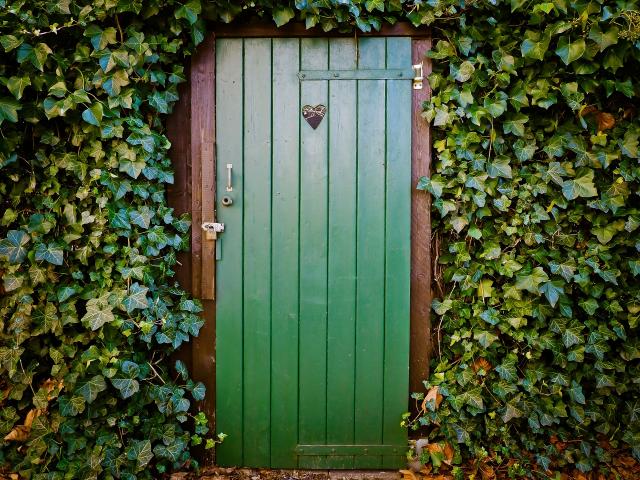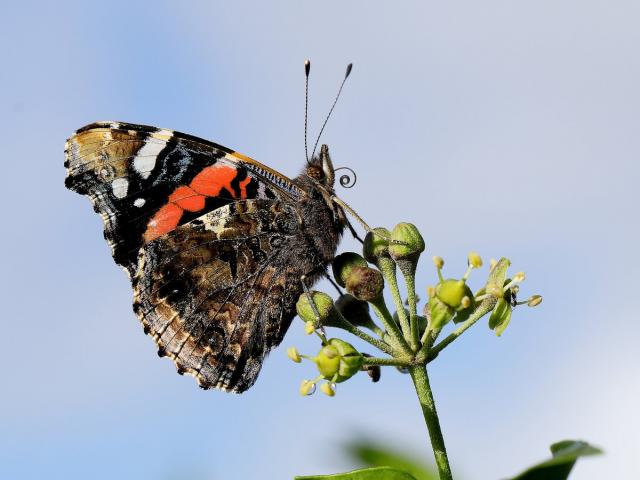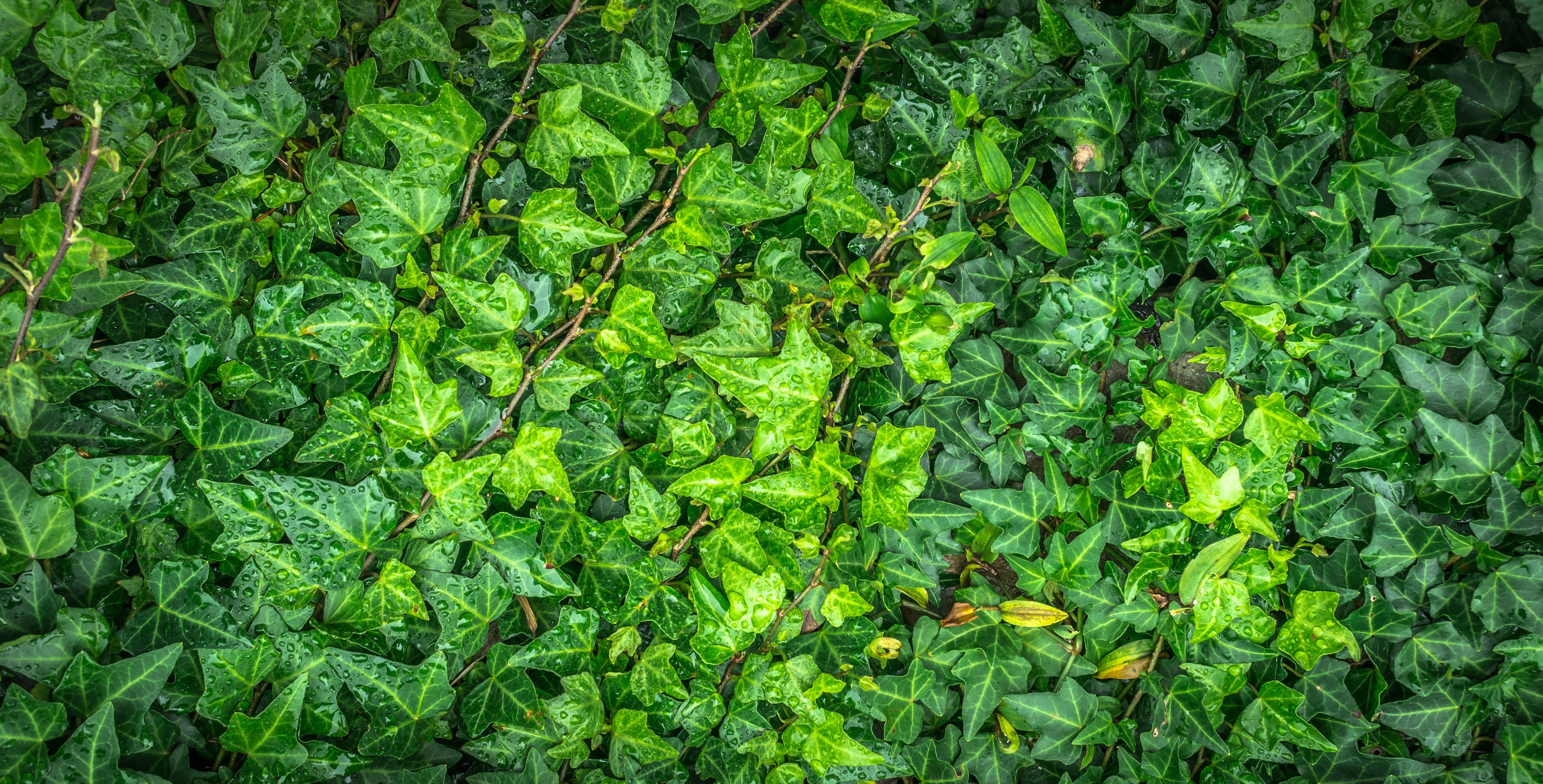Along with Holly and Mistletoe, ivy is one of the plants most strongly associated with Christmas.
Common Ivy Hedera helix
Ivy is a woody, evergreen, shade-loving climber, native to Europe. It can grow quickly into the canopy of a tree, clinging with its aerial roots. It can also grow as a trailing ground-cover plant, rooting at many points.
Ivy can provide attractive cover for fences and walls. It grows so vigorously that it can take over your garden. Regular trimming can prevent it from becoming too heavy for your trees or fences. Ivy is not a parasite and does not normally damage sound buildings or walls.
Folklore
The ivy plant has a fascinating history shrouded in folklore and superstition.
The Greek god Dionysus was known to wear a crown of ivy leaves. It is said that when a young maiden, Cissos, died of exhaustion after dancing at a celebration in his honour, Dionysus turned her into an ivy plant.

Ivy is often associated with witchcraft. It frequently features in spells for love and fertility. It was once believed that if ivy grew on the walls of a house the occupants were protected from evil.
In the ogam, (the Celtic alphabet that is the magical equivalent of the runes), ivy is known as Gort, and represents ruthlessness and achievement.
Some believe that ivy leaf patterns form the face of a wolf. This lupine link, alongside its evergreen properties, has made the plant a symbol of adaptability and survival.
Ivy can contribute to the survival of wildlife through the winter as it provides shelter at a time when most other plants are bare. Winter flowers and berries are a welcome food source when other supplies have all but disappeared.
It is well worth nurturing an ivy vine in your garden.
Nectar Source
Flowering ivy provides a useful nectar source in October and November, when other nectar sources can be in short supply. The small greeny-yellow flowers are followed by black berries from December.

Butterflies such as Red Admiral, Peacock and Small Tortoiseshell feed on the nectar to build up their reserves for winter.
A wide range of moth species can be seen feeding on ivy on milder nights in the autumn. Take a torch out after dark and you might find moths that overwinter such as the Chestnut and Satellite or typical autumnal species such as Green-brindled Crescent or Yellow-line Quaker.
Along the cliff-tops and coastal paths of the south coast, scarce immigrant moths can sometimes be found at ivy blossom.
Caterpillar Foodplant
Ivy is a useful caterpillar foodplant.
The Holly Blue butterfly has two broods each year – the first emergence of adults is from mid-April to June and the second is in late July and August. In spring, the commonest host-plant is Holly, whereas most midsummer eggs are laid on the flowers of ivy. Eggs are laid singly at the base of ivy flowerbuds – often those which are half-hidden and hanging in the shade.
Just over 20 species of moths have been reported to feed on ivy in the caterpillar stage.
- The Old Lady overwinters as a small caterpillar, feeding at night and becoming fully fed in May. It pupates in a cocoon and this has been found under loose bark and amongst ivy.
-The Double-striped Pug feeds on the flowers of ivy.
-The Yellow-barred Brindle feeds on the leaves, buds and flowers of ivy.
Ivy plants have been used as winter decorations for thousands of years. If you intend to harvest ivy to hang for Yuletide or collect some vines for your Christmas wreath, just be careful to check that you aren’t disturbing any wildlife, or your good luck charm could bring bad fortune for sheltering species.
Happy Christmas!
The Secret Gardener


